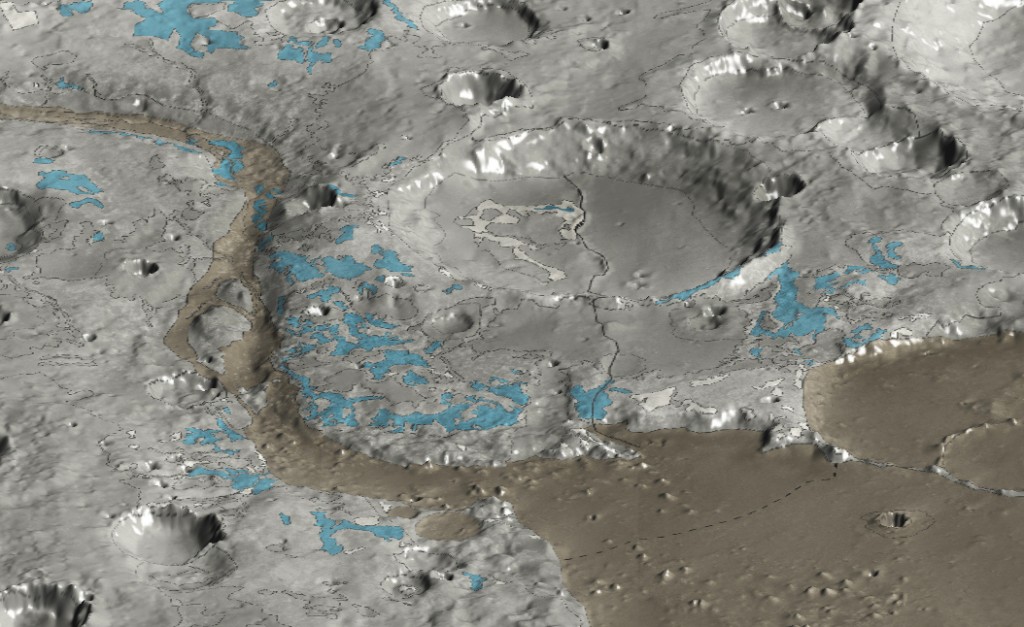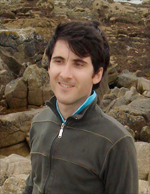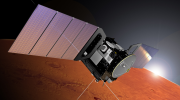Today’s post – part of a series of reports marking the MEX 10th anniversary – was submitted by planetary geologist Damien Loizeau, who is on the hunt for water on Mars – Ed.
I got involved in Mars Express when I started my PhD. Mars Express had been in orbit for a bit more than a year, the first results had just been published, and lots of new and exciting data were transmitted every week. Now I am part of two instrument teams for the mission: OMEGA, the imaging spectrometer, and HRSC, the high resolution stereo camera.
I work on the geology of the surface of Mars and these two instruments are perfect to study it. OMEGA helps us to determine the mineralogy of the surface, that is, the composition of the rocks, and we try to understand the age and the formation of the geological units with HRSC.
It was the first time that we had such a large dataset to understand the geology of Mars, and I was starting my scientific career inside this flow of new discoveries.
I could meet many of the leading European and American Mars scientists during the Mars Express instrument team meetings, where the most recent discoveries were presented and discussed. I also had the chance to work directly with the principal investigators of OMEGA and HRSC, in Orsay (France) and Berlin (Germany), respectively.
My first focus was on identifying minerals formed with liquid water. Liquid water is crucial for life on Earth, and it’s of utmost importance to evaluate if Mars was habitable, and if life had a chance to develop there. We mapped clays in different regions of Mars with OMEGA. On Earth, clay minerals mainly form over long periods by the interaction of rocks with liquid water. With the help of the orbiting high resolution cameras like HRSC, we observed that almost all the clay detections corresponded to rocks formed in the very early Martian history. This is a major sign of the drastic climate change that the Red Planet suffered more than 3 billion years ago.
I had the opportunity to make the map below for one of the Mars Express press conferences to illustrate our work, and I have been very happy to see it circulating on the web and in conferences for many years since.

Perspective view of clay-rich rocks (blue) on the old plateaus around the valley of Mawrth Vallis (left) and the crater Oyama (centre), made from a compilation of OMEGA, HRSC and MOLA (NASA Mars Global Surveyor) data. Credits : ESA/OMEGA/HRSC
Lately I had the opportunity to work for two years in one of ESA’s centres – ESTEC – in the Netherlands. I could follow more closely the missions with the scientists in charge of them, and the future projects like ExoMars. It was quite different from the academic world, with lots of new acronyms to remember!
Today, with the help of the instruments of the NASA Mars Reconnaissance Orbiter, we are discovering the diversity of environments were liquid water has been present in the past on Mars, not only at the surface, but also at kilometre depths. But there is still a lot to discover both within the datasets from the spacecraft still in orbit around Mars, and from future missions. Exciting times lie ahead!





Discussion: no comments